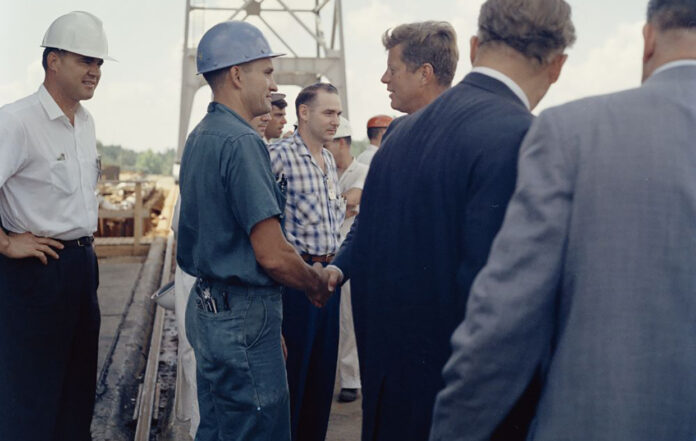While Presidents Day commemorates George Washington’s birthday, the holiday has come to also honor all presidents who have served in the prestigious office throughout our country’s history.
As we look back through history on this Presidents Day 2022, we are reminded of a handful of U.S. presidents who passed through Huntsville in recent years, and several who made memorable visits and historic speeches in the state of Alabama. Some of those visits and speeches are ironically significant as we continue the celebration of Black History Month.
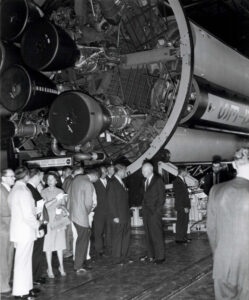
In recent years, President George W. Bush flew into Huntsville International Airport (HSV) on his way to the Browns Ferry Nuclear Plant in Limestone County. President George H.W. Bush spent a couple of hours in Huntsville in 1990 where he spoke to employees at Marshall Space Flight Center.
In 1984, President Ronald Reagan flew into HSV where he jumped on Marine One to give a July 4 speech at the 18th annual Spirit of American Festival at Point Mallard Park in Decatur; and in February 1974, President Richard Nixon gave a speech in Big Spring Park for Honor America Day.
Perhaps the most famous visits to Huntsville was when President Dwight Eisenhower spoke at the dedication of the Marshall Space Flight Center in 1960; and President John F. Kennedy on two occasions in 1962 and again in 1963, just weeks before he was tragically shot, both times in support of the space program at Marshall Space Flight Center. He reassured his commitment to putting Americans on the moon and he joined Dr. Wernher von Braun and his team of rocket scientists on a tour of MSFC.
President Grover Cleveland
Going back through history, however, one of the first recorded visits to the state of Alabama was in 1887 when President Grover Cleveland embarked on his famous Goodwill Tour, said to be the highlight of his presidency by many historians.
The 5,000-mile, 23-day journey by Pullman Palace Car (a Pullman train adapted for the presidential trip) through the Midwest ended in Montgomery, Ala.
According to the White House Historical Association, the presidential tour left rain-drenched Atlanta at midnight and arrived in Montgomery at 8 a.m. on October 19 where he was greeted by Alabama Senators J. L. Pugh and J. T. Morgan.
“A military escort stood ready for the inevitable parade through the streets of Alabama’s capital… Mrs. Cleveland was given a silver jewelry case by the mayor in the shape of a cotton bale,” the record reflects. “The governor received the presidential party at the fairgrounds.”
On a more substantial visit, both presidents William McKinley and Teddy Roosevelt’s speeches to Booker T. Washington’s Tuskegee Institute (now Tuskegee University) more than a decade later had much more historical impact.
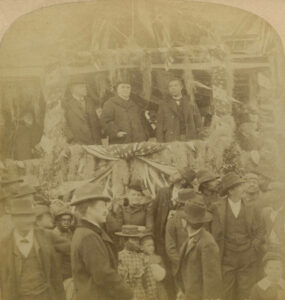
President William McKinley
On December 16, 1898, Tuskegee Normal and Industrial Institute founder, Booker T. Washington invited President McKinley for a visit to his new Black college. The name was later changed to Tuskegee Institute and in 1985, earned university status as Tuskegee University.
The presidential emissary arrived in Tuskegee, Ala. aboard a special train from Atlanta. The receiving entourage included Alabama Gov. Joseph Johnston and the whole Alabama Legislature. About 6,000 of the citizenries were also in attendance.
President McKinley began by watching a parade in his honor followed by touring the school. Afterward, he spoke about the school’s legacy in its well-known Tuskegee Chapel, where he cited Washington’s progress as sowing the “seeds of good citizenship.”
President Theodore Roosevelt
President Theodore Roosevelt’s visit to the Tuskegee Institute took place seven years later, on October 24, 1905. According to the American Presidency Project, Roosevelt began his speech by talking about how inspired he was by what he had seen on his tour of the school.
“I was prepared to see what would impress me and please me, but I had no idea that I would be so deeply impressed, so deeply pleased as I have been,” he said. “The work of the Tuskegee Normal and Industrial Institute is a matter of the highest practical importance to both the white man and the black man, and well worth the support of both races alike in the South and in the North,” he continued. “Every black man who leaves this institute better able to do mechanical or industrial work adds by so much to the wealth of the whole community and benefits all people in the community.”
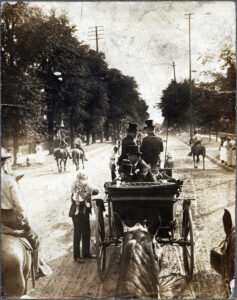
President Warren Harding
On October 26, 1921, President Warren Harding visited Birmingham during its weeklong 50th-anniversary celebration at Capitol Park (now Woodrow Wilson Park).
According to Narratively Hidden History archives, Harding’s presidential envoy arrived in Birmingham to recognize the city’s population and economic growth as a thriving industrial center, which led to Birmingham being nicknamed the “Magic City.”
According to the recorded account, Harding toured a Fashion-Industrial Exposition; watched a mine-rescue demonstration; and laid the cornerstone of the Masonic Temple. He then led a parade of Civil War veterans, National Guardsmen, industrial workers, and the “Pioneers of 1861” who were ancestors of the city’s original founders, through the downtown business district. He did so in grand style, riding in a Premocar manufactured in Birmingham by Preston Motors Corp. He made his final appearance at the Pageant of Birmingham in Avondale Park.
In front of a crowd of 100,000 and flanked by Alabama Governor Thomas Kilby and Birmingham Mayor Nathanial Bartlett, the president gave what has been remembered as “a speech ahead of its time” and the first speech by a sitting American president to call for “political equality for African-Americans” in the South.
President Franklin D. Roosevelt
Nearly 20 years later, on April 3, 1939, President Franklin D. Roosevelt expanded the Army Air Corps, opening doors for African Americans who wanted to advance their military careers.
Charles A. Anderson, a self-taught African American pilot, established a civilian pilot training program at the Tuskegee Institute and in 1941, the War Department created the 99th Pursuit Squadron (later became known as the 99th Fighter Squadron), an all-Black flying unit trained at the Alabama school.
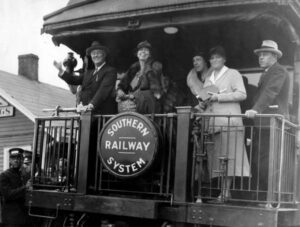
According to the National Archives, first lady Eleanor Roosevelt was interested in the work at the Tuskegee Institute, particularly in the aeronautical school, and during a highly publicized 1941 visit to the Tuskegee Army Airfield, she requested a flight with one of the Tuskegee pilots. Anderson, known today as “The Father of Black Aviation,” piloted the first lady over the skies of Alabama for over an hour.
The president himself made at least three visits to Alabama during his term in office from 1933 until 1945.
In the early days of FDR’s presidency, he visited Sheffield, Ala. on what was called a Muscle Shoals Inspection Trip in January 1933. The inspection was the result of the incorporation of Muscle Shoals and the formation of the Tennessee Valley Authority. It marked the beginning of a river and dam development, and plans for an elementary school, water works, electric power system and the installation of a telephone system.
“I am here for two reasons,” FDR said. “The first is to fulfill a promise made to myself, because, during the campaign, I said that I wanted to see Muscle Shoals.
“The other is that I do not believe that any person in the world can act or make a recommendation in regard to any great project unless he has seen the project himself. Today I am looking forward with the greatest interest to seeing this particular part of the Tennessee Valley. I am very confident that the distinguished gentlemen who are with me from the Congress of the United States will be able to work with me and get something practical done.”
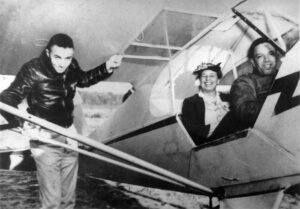
He closed with, “And so, my friends, I am looking forward with the greatest of pleasure to my day here. It is going to give me a great advantage in putting Muscle Shoals back on the map.”
President Roosevelt also visited the Alabama Polytechnic Institute in Auburn, Alabama. Now known as Auburn University, Roosevelt stopped in Auburn in March 1939, during his return from his and Eleanor’s Tuskegee trip.
“I am glad to come here and see the work that is being done,” he said according to the National Archives. “You young men and women who go through Auburn and go out into every county in this State have a great responsibility, not only to put into practice what you have learned here but also to try to devise new methods, new means—experiments, if you like- in order to improve the conditions during your own lifetime.
“I believe you can do it because you are getting the fundamentals, the essential training, that will give you the personal capacity to use your imagination. We shall never get anywhere until we do more and more of that.”
Don’t miss out! Subscribe to our email newsletter to have all our smart stories delivered to your inbox.


